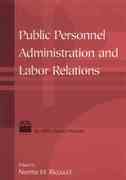Question
Question One (worth ten points) Assume that legislators in two states are deciding whether or not to extend health care coverage to the children of
Question One (worth ten points)
Assume that legislators in two states are deciding whether or not to extend health care coverage to the children of immigrants. Extending health care coverage has benefitshelping those in need, reducing future health care costs (healthier children today mean lower future costs when they become adults), and increasing future tax revenues (healthy individuals are more likely to work full time and contribute more in taxes than unhealthy individuals). A final assumption: State A is seeing new businesses move into the state and the new businesses are willing to pay some higher taxes to support extending health care coverage so that the business will have more potential workers to choose from. State B has a stagnant economy and there is no pressing need for more potential workers.
Let's transform everything into dollar measures. Assume that if both states pay for the expansion of health care coverage that State A receives a net gain of $5,600,000 while State B receives a net gain of $3,800,000. If State A pays for the expansion of health care coverage but State B does not then State A receives a net gain of $3,400,000 while State B receives a net gain of $4,500,000. If State B pays for the expansion of health care and State A does not then State A receives a net gain of $5,800,000 while State B receives a net gain of $2,500,000. If neither state pays for the expansion of health care then State A receives a net gain of $3,200,000 and State B receives a net gain of $2,700,000.
a. Explain why the numbers make sensethat is why does a state gain if the other state provides health insurance while it does not.
b. Assume that both states must simultaneously make decisions about whether or not to expand health care coverage. Set up the matrix and then determine if there is an equilibrium.
c. Assume that State B must decide first and then State A responds. What is the equilibrium?
d. Suppose State A must decide first and then State B responds. What is the equilibrium?
Step by Step Solution
There are 3 Steps involved in it
Step: 1

Get Instant Access to Expert-Tailored Solutions
See step-by-step solutions with expert insights and AI powered tools for academic success
Step: 2

Step: 3

Ace Your Homework with AI
Get the answers you need in no time with our AI-driven, step-by-step assistance
Get Started


